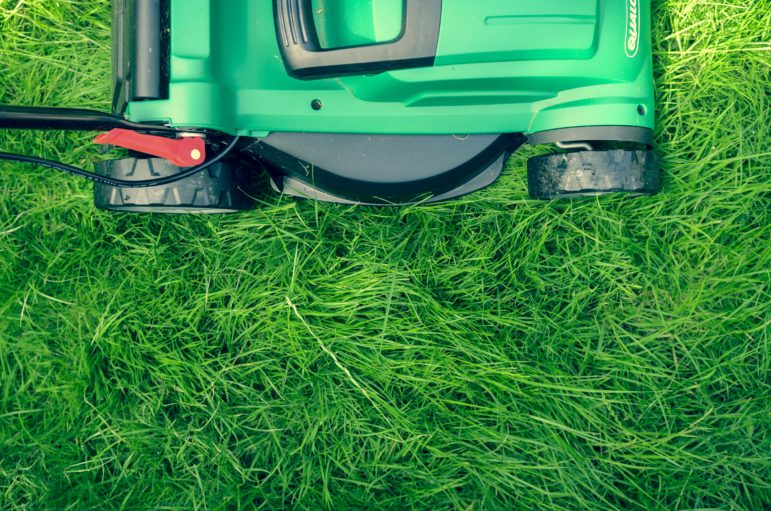
It’s the surest sign of summer: the noisy roar of the gas-powered lawn mower. Add in the leaf blowers, trimmers, chain saws, and other turf care equipment and you’ve got a stinky, dirty din going on in your backyard.
Although gas-powered small engines consume little gas relatively speaking, they’re incredibly inefficient. Since there are no emission controls or catalytic converters in their design, they produce raw exhaust emissions that are truly nasty.
Burning gasoline and diesel is also deadly. Gasoline-powered lawn care equipment emit harmful gases like carbon monoxide, particulate matter, and nitrogen oxides, contributing to serious respiratory diseases and producing poor outdoor air quality in our cities.
According to the U.S. Environmental Protection Agency (EPA), a new gas-powered lawn mower produces volatile organic compounds and nitrogen oxides emissions in one hour of operation as 11 new cars each being driven for one hour. And every year, Americans burn 800 million gallons of gas—just to keep their lawns looking trim. In other words, gas consumption fueling the lawn care industry totals nearly $2 billion dollars a year.
So, why not say goodbye to gas this summer and go all-electric?
Below our mini guide to electric lawn care:
Lawn mowers: Electric mowers generally come in two varieties: corded and cordless. Corded mowers don’t require recharging, so they run longer than cordless, but keep in mind the power cord will limit your mowing range. Besides being quieter, electric mowers also boast the benefits of zero gasoline, no fuel filters or spark plugs to change, and no toxic fumes trailing the motor. Plus, they always start right up.
Got a big lawn to mow? Electric riding mowers are also a smart option. And if you have a small lawn that requires less upkeep, a manual reel mower presents an economical and truly emissions-free option!
Fun side note: most major home improvement stores now have more electric lawn mower options than gas-powered ones!
Trimmers: Gas-powered trimmers are a commonly used yard tool that rely on a durable, yet flexible plastic line or wire instead of a blade to cut weeds and grasses in hard to reach places. Along with their annoying pull-string function and myriad moving parts, gas-powered trimmers are noisy polluters. Cordless rechargeable weed-eaters can run continuously for about 30 minutes to 60 minutes, depending on the size of the battery—and they’re better for you and the environment. They’re also becoming the norm, thanks to improved battery technology.
Leaf blowers: If your lawn is too large for leaf cleanup with a rake, a corded electric handheld blower offers leaf-moving power on par with that of many gas models, at a fraction of the cost, weight, and noise. And with wind speeds of up to 100 miles-per-hour, electric leaf blowers will tidily clean up your yard, without the noxious fumes.
Looking for more sustainable lawn care tips? Check out the Minnesota Pollution Control Agency’s guide to a healthy, no-waste lawn and garden.
Fresh Energy is working to ensure our future is all-electric: from our cars to our homes and buildings. Learn other tips you can take to fight climate change and sign up for our monthly newsletter, Powering Progress to stay in the loop.

